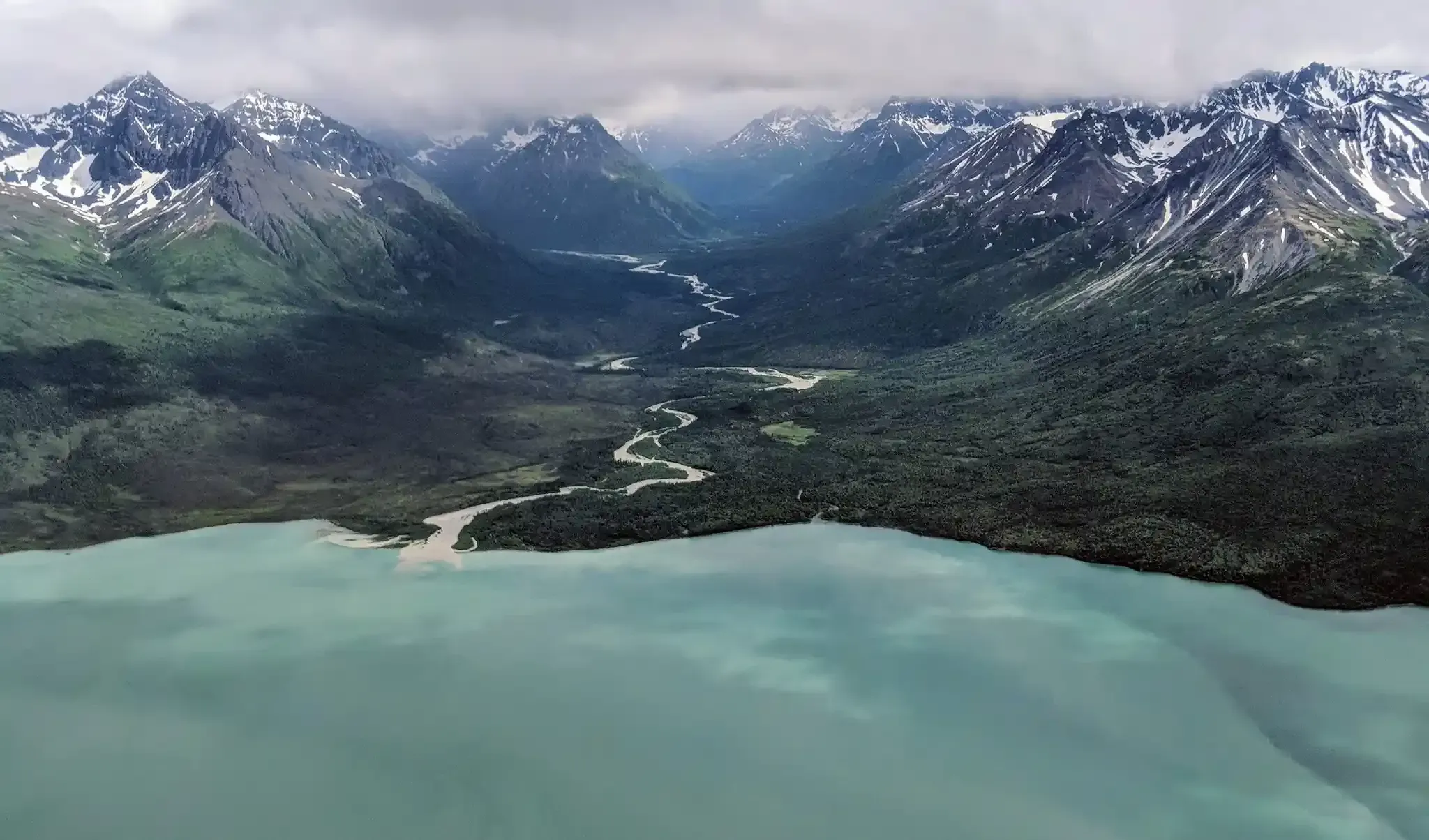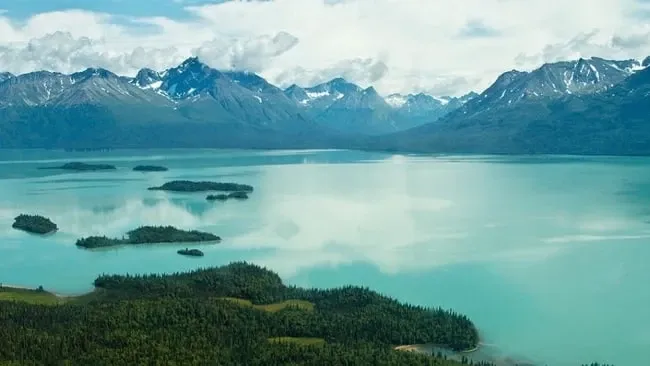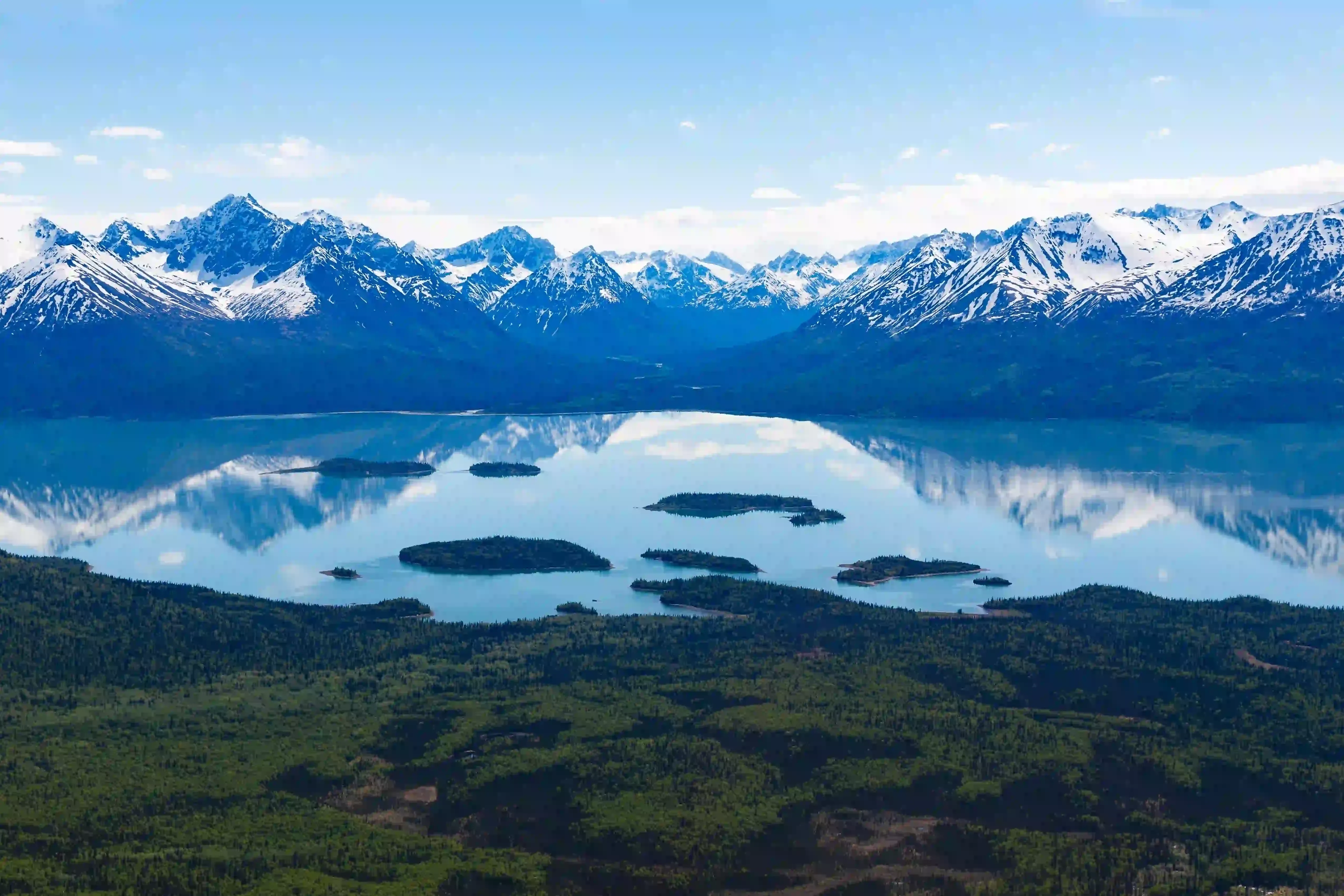Alaska, a land celebrated for its majestic mountains, magnificent glaciers, and abundant wildlife, also harbors a lesser-known natural treasure: its stunning forests. Beyond the mountains and ice, Alaska boasts vast primeval forests where lush greenery thrives in the wilderness, creating a diverse and captivating natural tapestry. If you seek a journey to discover authentic natural beauty, Alaska’s forests are an unmissable destination.
Lake Clark National Park, a hidden gem in southwestern Alaska, perfectly exemplifies the region’s forest splendor. Renowned not only for its pristine turquoise lake and imposing volcanoes but also for its expansive forests teeming with rare flora and fauna. Join Discovery To Wonders as we explore the most beautiful forests in Alaska, starting with Lake Clark National Park, to fully immerse yourself in the untouched and magnificent beauty of this land.
Discovering Alaska’s Untamed Forest Beauty
Alaska’s forests are unlike any others in the world. They represent a unique intersection of temperate and boreal forests, creating a diverse and rich ecosystem. The primeval forests of Alaska retain their untouched beauty, minimally impacted by human activity, offering visitors the sensation of stepping into another world where nature reigns supreme.
Venturing into Alaska’s forests, you’ll be awestruck by the grandeur of towering pines, spruces, and firs reaching for the sunlight. Beneath the cool canopy, a rich undergrowth of mosses, ferns, and wildflowers compete in a colorful display, crafting a poetic and lyrical scene. The melodious birdsong, the gentle murmur of streams, and the rustling leaves in the wind compose a soothing natural symphony, calming the soul and bringing a sense of profound peace.

Forests of Lake Clark National Park: Alaska’s Hidden Gem
Lake Clark National Park, spanning over 16,000 km², is among the largest and most pristine national parks in the United States. It’s hailed as Alaska’s “hidden gem” for its extraordinary and often overlooked natural beauty. Alongside the dreamy Lake Clark and dramatic volcanoes, the national park features vast primeval forests that dominate the landscape, providing an ideal habitat for wildlife and a compelling destination for nature enthusiasts.
The forests in Lake Clark National Park are primarily Taiga, also known as boreal coniferous forests, dominated by black spruce, white spruce, Lodgepole pine, and birch trees. These forests are not only ecologically significant but also offer unique scenic beauty that transforms with the seasons. In summer, the forests are cloaked in vibrant green, brimming with life. Autumn paints the foliage in brilliant yellows and reds, creating a romantic and enchanting panorama. Winter blankets the forests in pristine white snow, imparting a serene and mystical beauty.
A defining characteristic of Lake Clark National Park’s forests is their untouched and pristine state. Due to their remote and inaccessible location, these forests have preserved their inherent natural beauty, with minimal human impact. They serve as a safe haven for numerous rare wildlife species, including the famed Alaskan brown bear. Visitors here have the chance to immerse themselves in the wilderness, explore the diverse forest ecosystem, and marvel at the majestic beauty of Alaska’s forests.

Diverse Forest Ecosystems in Alaska
Alaska boasts a variety of forest types, from temperate rainforests along the southern coast to vast Taiga forests inland and tundra forests in the higher elevations. This diversity fosters a rich forest ecosystem, home to many distinctive plant and animal species.
Temperate Rainforests: Situated along Alaska’s southern coastline, temperate rainforests are among the most unique forest ecosystems globally. With abundant rainfall and mild climates, Alaska’s temperate rainforests are dominated by colossal Sitka spruce, western red cedar, and western hemlock trees. The understory vegetation is highly diverse, featuring mosses, ferns, lichens, and numerous herbaceous plants. Temperate rainforests are habitats for rare animals such as black bears, Sitka black-tailed deer, and bald eagles.
Taiga Forests (Boreal Coniferous Forests): Covering the majority of Alaska’s landmass, Taiga forests are the most prevalent forest type in the region. Taiga forests are characterized by cold winters and short summers, with vegetation primarily consisting of coniferous trees like black spruce, white spruce, pine, and fir. Taiga forests play a crucial role in climate regulation and provide habitat for numerous wildlife species, including moose, caribou, wolves, and bears.
Tundra Forests: In the high mountain regions and Alaska’s far north, where climates are harsh and soils are infertile, tundra forests develop with low-lying shrubs, dwarf birch trees, and willows. Tundra forests are vital for soil protection and provide food for animals like caribou and snowshoe hares.
Experiencing and Exploring Alaska’s Forests
Exploring Alaska’s forests is a unique and memorable travel experience. There are numerous ways to immerse yourself in the beauty of these forests:
Hiking: Alaska offers countless hiking trails through its forests, ranging from easy day trails to challenging multi-day treks. Hiking is an excellent way to discover the beauty of the forest, admire natural landscapes, observe wildlife, and enjoy the fresh air. In Lake Clark National Park, you can hike along trails beside the lake, through the forests, or ascend mountains for panoramic views of the area.
Kayaking or Canoeing: Many Alaskan forests border rivers, lakes, or bays, creating ideal conditions for paddling activities. Kayaking or canoeing is a fantastic way to explore the forests from a different perspective, navigate winding rivers, admire forest reflections on the water, and relish the tranquility of nature.
Forest Camping: For a more immersive nature experience, try camping in Alaska’s forests. Many national parks and nature reserves in Alaska have well-equipped campsites, allowing you to spend nights among the trees, listen to insect sounds, and gaze at the starlit sky.
Wildlife Viewing: Alaska’s forests are home to many rare wildlife species. Join eco-tours or explore the forests independently for opportunities to observe brown bears, black bears, moose, caribou, wolves, and numerous bird species in their natural habitats.

Tips for Visiting Alaska’s Forests
For a fulfilling and safe forest exploration trip in Alaska, keep these points in mind:
- Ideal Time to Visit: Summer (June to August) is the best time to explore Alaska’s forests, with warm weather, long daylight hours, and lush greenery. Autumn (September and October) is also a good choice, showcasing stunning fall foliage.
- Clothing and Gear Preparation: Alaska’s weather can be unpredictable, so pack warm, waterproof clothing, specialized hiking boots, sunscreen, insect repellent, and other essential personal items.
- Forest Exploration Safety: When hiking or camping in the forest, always travel in groups, carry a map, compass, or GPS, inform others of your itinerary, and adhere to park or reserve safety regulations. Be especially cautious of wildlife, maintain a safe distance, and never feed them.
- Choose Reputable Tour Operators: If you wish to join guided forest exploration tours in Alaska, select reputable tour companies experienced in organizing eco-tours and employing local guides knowledgeable about nature and wildlife. Premier Tour is an excellent option, offering professional and diverse Alaska tours, including explorations of Lake Clark National Park and other beautiful forests.
Conclusion
The most beautiful forests in Alaska are more than just woodlands; they are symbols of untouched beauty, majesty, and nature’s vibrant vitality. Exploring Alaska’s forests is a magnificent experiential journey, providing opportunities to connect with the wilderness, discover diverse ecosystems, and embrace peace and tranquility. Plan your Alaska trip today and be sure to allocate time to explore these stunning forests, to fully appreciate the magical beauty of the Alaskan wilderness.